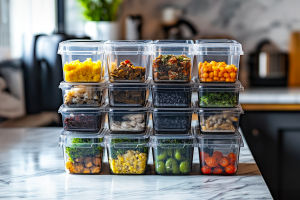Have you ever dreamed of visiting Morocco, or Mexico—but without leaving your home? Good news: you can experience the vibrant flavors of the world right from your kitchen.
With just a few basic spices and ingredients, it's possible to explore global cuisines, expand your cooking skills, and bring excitement to your meals. No passport required—just an open mind and a willingness to try something new.
Cooking international dishes at home isn't just fun; it's educational, affordable, and rewarding. It teaches you about different cultures, introduces you to new ingredients, and gives you the tools to break free from boring routines. Let's take a journey across continents through the magic of spice.
The Power of Spice
What makes a dish Moroccan, or Mexican? Often, it's the spices. Spices are the heart of global cooking. They carry the aromas, colors, and flavors that define regional cuisines. For example, cumin and coriander bring warmth to Middle Eastern stews, and smoked paprika adds depth to Spanish dishes.
According to food historian Dr. Jessica B. Harris, "Spices tell the story of trade, migration, and identity." They're not just flavor boosters—they're cultural storytellers. A well-stocked spice cabinet can instantly open up your kitchen to international influences.
Start with Global Staples
To explore the world through food, start by gathering some global pantry staples. You don't need dozens of rare ingredients—just a small, flexible collection that allows for creativity. Here are a few key items from around the world:
• Mexico: chili powder, cumin, oregano, black beans, cornmeal, lime
• Italy: dried basil, oregano, garlic, canned tomatoes, olive oil, pasta
• Middle East: cinnamon, allspice, tahini, chickpeas, bulgur, mint
These ingredients are often inexpensive, long-lasting, and available at many supermarkets or international grocery stores.
One Dish at a Time
Trying a whole new cuisine can feel overwhelming at first. The secret? Start small—one dish at a time. Choose a recipe that's simple but authentic. For instance, instead of recreating an entire Mexican feast, start with chiles rellenos or elote-style grilled corn.
Cooking one new dish per week is a manageable goal that allows you to slowly build your comfort with new ingredients and techniques. Plus, it gives your weekly menu a refreshing twist.
Get to Know Global Cooking Techniques
Each region of the world has its own signature cooking methods. Understanding these techniques can help you bring authenticity and depth to your meals. Here are a few examples:
• Stir-frying : quick, high-heat cooking using minimal oil and fresh ingredients.
• Slow-simmering (found in Caribbean, and Moroccan dishes): allows spices to develop deep, layered flavors over time.
• Grilling and charring (typical in Middle Eastern and Latin American cuisine): adds smokiness and texture to meats and vegetables.
• Steaming and boiling (used widely in Japanese, Korean, and Vietnamese dishes): keeps food light and healthy while preserving flavor.
Mastering these techniques makes it easier to experiment with different cuisines and build confidence in the kitchen.
Cooking with Kids or Friends
Cooking global meals is a fun way to bring people together. Invite friends over for a themed dinner night—Moroccan tagine one week, Japanese miso soup the next. Or turn it into a family activity by letting kids explore spices, choose recipes, and help with prep. It's an interactive way to teach geography, history, and cultural appreciation through food.
You can even create a monthly "international food night" and vote on a country to explore. This transforms regular meals into memorable experiences—and makes everyone look forward to dinnertime.
Budget-Friendly and Healthy
Contrary to popular belief, international meals can actually be more affordable and nutritious than pre-packaged or fast food. Dishes from many global cuisines use plant-based ingredients like legumes, rice, and seasonal vegetables. These foods are often cheaper and more sustainable than processed items.
A study published in the International Journal of Behavioral Nutrition and Physical Activity found that people who cook at home regularly—including multicultural recipes—are more likely to eat balanced diets rich in fiber, vitamins, and whole foods. Adding global meals to your routine can boost both your nutrition and your savings.
Spices with Health Benefits
Beyond flavor, many spices used in global cooking offer health benefits. For instance:
• Ginger helps with digestion and nausea.
• Cinnamon may help stabilize blood sugar levels.
• Chili peppers contain capsaicin, which can support metabolism.
These spices are used not only for taste but also as part of traditional healing systems around the world. Adding them to your meals can boost flavor and wellness.
Make Your Own Spice Blends
One way to feel more connected to global cooking is to make your own spice blends. Instead of buying pre-mixed seasonings, try mixing your own:
• Taco seasoning: chili powder, paprika, cumin, onion powder, and oregano
• Za'atar: thyme, sumac, sesame seeds, and salt
Homemade blends are more affordable, customizable, and free from unnecessary additives. They also make your dishes taste fresher and more vibrant.
Learn from the Pros
Thanks to the internet, you have access to authentic voices and recipes from around the world. Look for cooking videos by chefs who share recipes from their home countries. Platforms like YouTube, Instagram, and TikTok offer visual tutorials that make learning new dishes easier and more fun.
Cookbooks focused on specific cultures can also be a great investment. Choose ones that include ingredient explanations and basic techniques for beginners. Reading food stories from around the world adds depth to your cooking and appreciation for global traditions.
Your Passport to Flavor
Exploring world cuisines from your kitchen is about more than food—it's about discovery, curiosity, and creativity. As you build your spice cabinet and cooking knowledge, your meals become more than just fuel—they become an experience.


